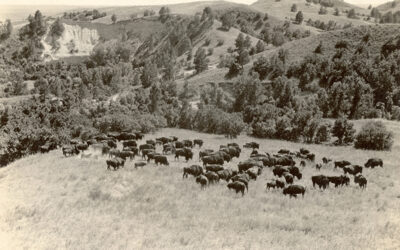Art in Nebraska has developed rapidly – from Native American to surrealist efforts – in little more than 150 years. Nebraska, A Guide to the Cornhusker State, compiled by the Federal Writers’ Project in 1939, described early European and American artists who traveled and worked in Nebraska prior to statehood.
One of the first painters in Nebraska was Samuel Seymour, official artist with Maj. Stephen H. Long’s exploring expedition. At Engineer Cantonment in 1819 he depicted councils with the Otoe and the Pawnee. He produced many paintings or sketches on the expedition, but only a handful are known today. He and naturalist Titian Peale, who also accompanied the Long expedition, made the first American paintings and sketches of the Rocky Mountains and of some plant and animal life on the Plains.
A more prolific and renowned artist than Seymour was George Catlin, a sympathetic observer of Native American life, who went up the Missouri River in 1832 and returned in 1833. During that time he depicted Nebraska scenes, as well as portraits and drawings of Nebraska’s Pawnee, Omaha, Otoe, and Ponca. Typical examples from the Catlin collection in the Smithsonian Institution, Washington, D.C., depict Blackbird’s grave at Bellevue and the mouth of the Platte River. He produced more than six hundred paintings of notable Indians and their dwellings.
Karl Bodmer, Swiss contemporary of Catlin, accompanied Prince Maximilian of Wied on his exploring trip to North America, begun in 1832 and ended in August of 1834. They traveled down the Ohio River and up the Missouri to the outskirts of the Rocky Mountains. During his two years in North America, Bodmer produced hundreds of pencil sketches and watercolor paintings, including depictions of such Nebraska scenes as fur trader John Dougherty’s Upper Missouri Indian Agency.
These early artists produced not only works of art but also a record of an early period of Nebraska history. Catlin’s paintings did not follow conventional patterns but portrayed his subjects just as he saw them. Bodmer’s landscapes depict landmarks identifiable today. His portraits of Native Americans are so detailed that they remain the most important visual record of the Plains tribes of the early nineteenth century.
(October 2004)



